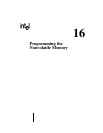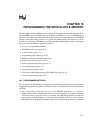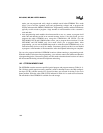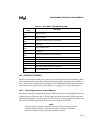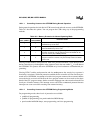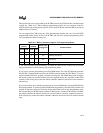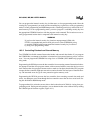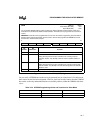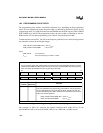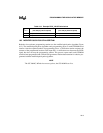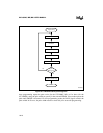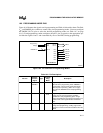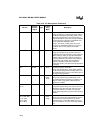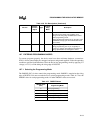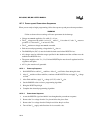
16-7
PROGRAMMING THE NONVOLATILE MEMORY
You can verify a UPROM bit to make sure it programmed, but you cannot erase it. For this reason,
Intel cannot test the bits before shipment. However, Intel does test the features that the UPROM
bits enable, so the only undetectable defects are (unlikely) defects within the UPROM cells them-
selves.
USFR
Address:
Reset State (MC, MD):
Reset State (MH):
1FF6H
02H
XXH
The unerasable PROM (USFR) register contains two bits that disable external fetches of data and
instructions and another that detects a failed oscillator. These bits can be programmed, but cannot be
erased.
WARNING: These bits can be programmed, but can never be erased. Programming these bits makes
dynamic failure analysis impossible. For this reason, devices with programmed UPROM bits cannot
be returned to Intel for failure analysis.
7 0
— — — — DEI DED — —
Bit
Number
Bit
Mnemonic
Function
7:4 — Reserved; for compatibility with future devices, write zeros to these bits.
3 DEI Disable External Instruction Fetch
Setting this bit prevents the bus controller from executing external
instruction fetches. Any attempt to load an external address initiates a
reset.
2 DED Disable External Data Fetch
Setting this bit prevents the bus controller from executing external data
reads and writes. Any attempt to access data through the bus controller
initiates a reset.
1:0 — Reserved; for compatibility with future devices, write zero to these bits.
Figure 16-1. Unerasable PROM (USFR) Register
Table 16-4. UPROM Programming Values and Locations for Slave Mode
To set this bit Write this value To this location
DEI 08H 0718H
DED 04H 0758H



